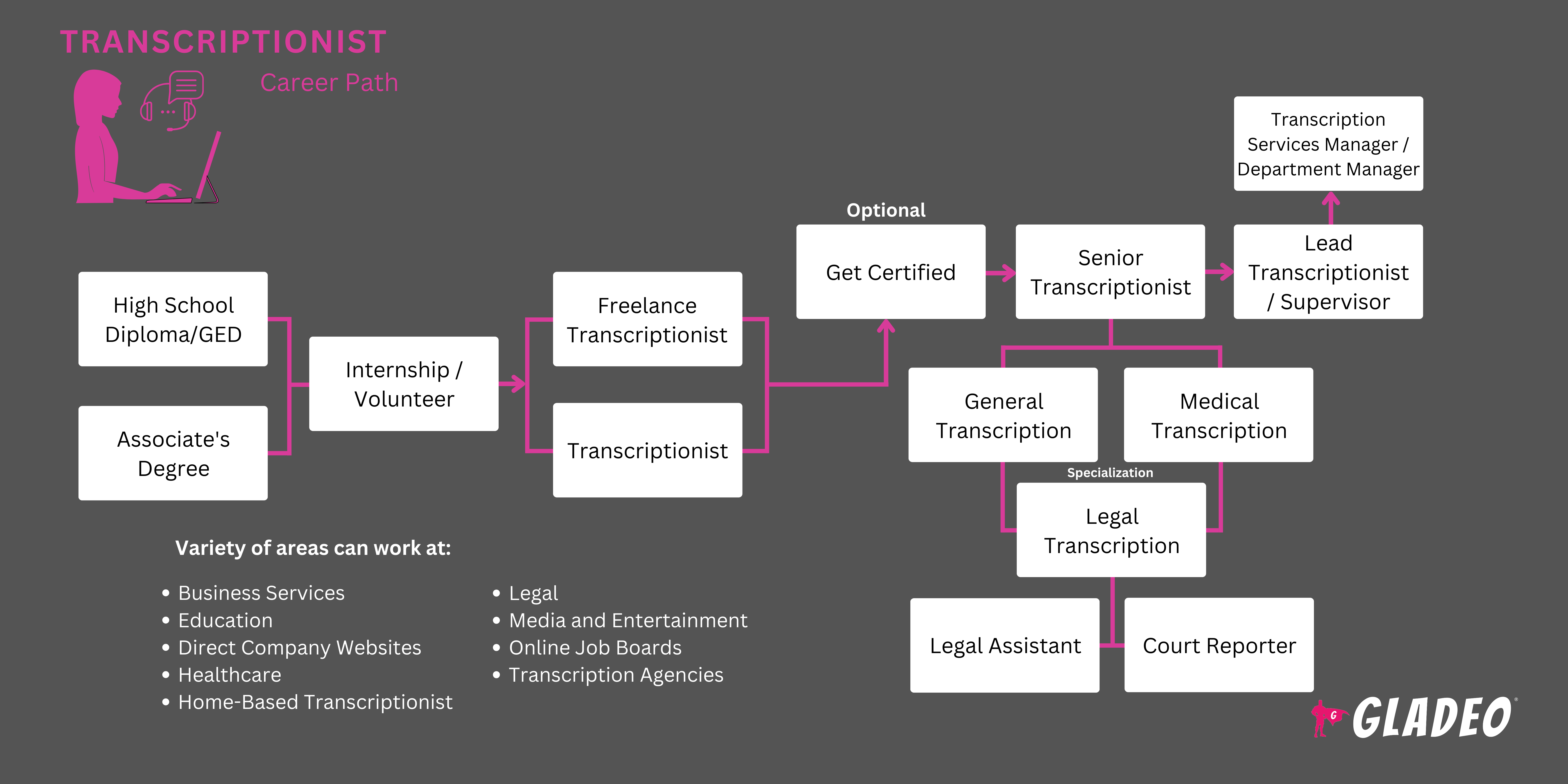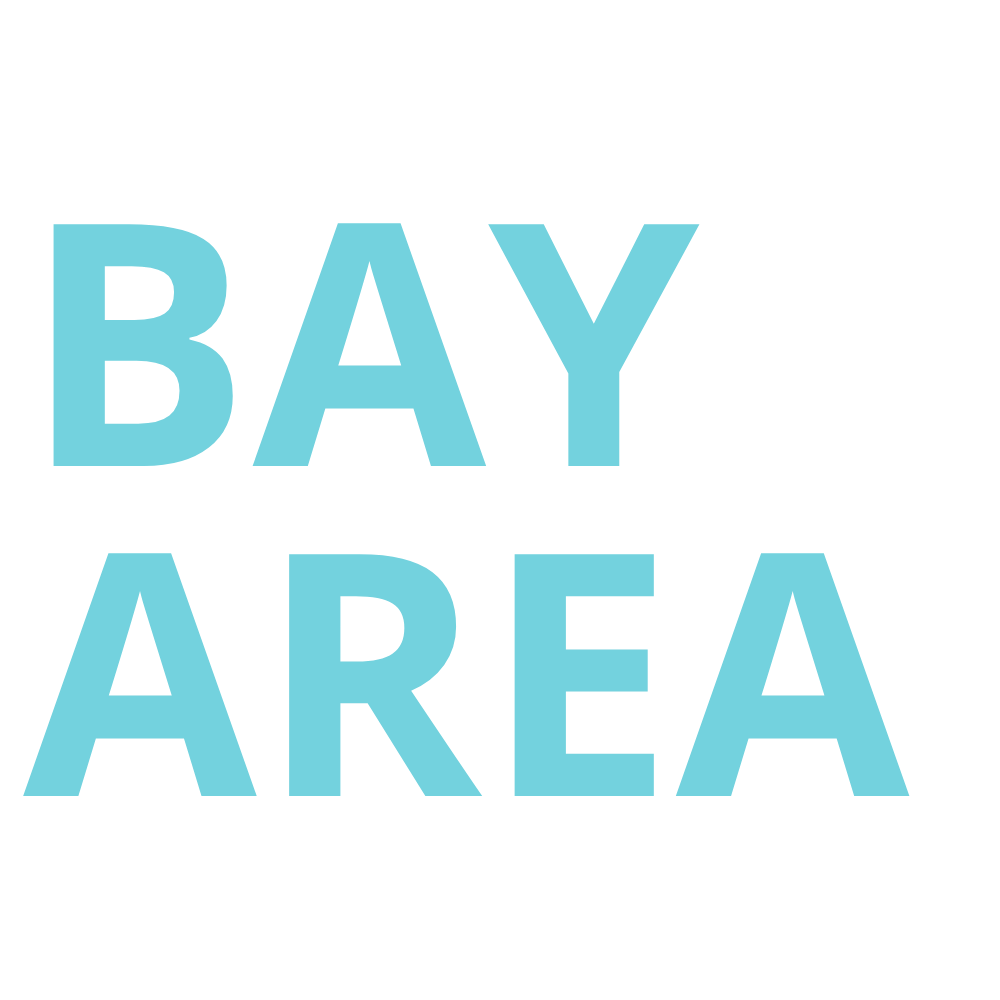Mga spotlight
Klinikal na Transkripsyonistang Medikal, Espesyalista sa Dokumentasyon, Espesyalista sa Wikang Medikal, Tagasulat ng Medikal, Tagasalin ng Medikal, Transkripsyonistang Medikal, Transkripsyonistang Patolohiya, Transkripsyonistang Radiolohiya, Tagasulat, Transkripsyonista, Transkripsyonistang Legal
Araw-araw, sa bawat industriya, may mga pagpupulong, talumpati, presentasyon, at konsultasyon kung saan ang diyalogo ay kailangang makuha sa pamamagitan ng pagsulat, maging ito man ay agad-agad o mula sa mga video recording ng mga propesyonal na Transcriptionist!
Sa pamamagitan ng pagta-type ng mga binigkas na salita sa verbatim na teksto, tinitiyak ng mga Transcriptionist ang malinaw, tumpak, at madaling makuhang dokumentasyon ng mga pagpupulong, panayam, medikal na dikta, mga parangal, mga legal na paglilitis, at hindi mabilang na iba pang mga kaganapan.
Halimbawa, sa larangan ng medisina, nakikinig ang mga transcriptionist sa mga recording mula sa mga propesyonal sa pangangalagang pangkalusugan at isinasalin ang mga ito sa mga rekord ng pasyente upang ang mga medikal na kasaysayan at mga plano sa paggamot ay makuha para sa sanggunian. Sa legal na larangan, isinasalin nila ang mga paglilitis sa korte, mga deposisyon, at mga legal na talakayan upang magbigay ng isang maaasahang nakasulat na rekord na maaaring magamit sa mga paglilitis at apela.
Ang mga transcriptionist ay nangangailangan ng pambihirang kasanayan sa pakikinig pati na rin ang kakayahang mag-type nang mabilis at gumamit ng mga espesyal na kagamitan at software ng transcription. Dahil ang kanilang trabaho ay karaniwang "nasa likod ng mga eksena," maaaring hindi sila makatanggap ng maraming pagkilala, ngunit ang kanilang mga trabaho ay mahalaga pa rin!
- Gumaganap ng mahalagang papel sa pagpapanatili ng tumpak na mga talaan
- Pagtiyak ng wastong dokumentasyon para sa mga propesyonal na pangangailangan
- Mga pagkakataong magtrabaho nang malayuan at may kakayahang umangkop
- Pakikipagtulungan sa mga propesyonal sa iba't ibang industriya
Oras ng trabaho
Ang mga transcriptionist ay maaaring magtrabaho nang full-time o part-time, na may kakayahang umangkop sa remote work. Maaari silang magtrabaho para sa mga serbisyo ng transcription, mga legal firm, mga tagapagbigay ng pangangalagang pangkalusugan, o bilang mga independent contractor.
Mga Karaniwang Tungkulin
- Makinig sa na-record na audio at i-convert ito sa nakasulat na teksto sa pamamagitan ng pag-type nito at paggamit ng software bilang tulong, kung kinakailangan.
- Suriin ang mga draft ng mga transkripsyon na ginawa ng mga programa sa pagkilala sa pagsasalita.
- Magbigay ng real-time na transkripsyon para sa mga live na kaganapan o pagpupulong kung kinakailangan.
- Isalin ang mga pagpapaikli o kumplikadong terminolohiya, kung kinakailangan.
- Mag-alok ng mga serbisyo sa transkripsyon sa maraming wika, kung bilingguwal.
- Tukuyin ang mga tagapagsalita at tiyakin ang wastong pagpapatungkol sa mga recording ng maraming tagapagsalita.
- Magsaliksik ng mga hindi pamilyar na termino upang matiyak ang tamang transkripsyon.
- I-format ang mga transkripsyon ayon sa hinihinging mga alituntunin.
- I-proofread at i-edit ang mga transcript para sa katumpakan at kalinawan.
- Panatilihin ang maayos na mga talaan. Ilagay ang mga ulat sa mga sistema ng talaan, kung kinakailangan.
- Tiyakin ang pagiging kumpidensyal at seguridad ng sensitibong impormasyon. Lagyan ng label ang materyal nang naaayon.
- Ibahagi ang mga pinal na materyales sa mga kinauukulang stakeholder, ayon sa itinagubilin.
Karagdagang Pananagutan
- Paunlarin ang kadalubhasaan sa mga espesyalisadong larangan (hal., medikal, legal, o pinansyal na transkripsyon).
- Sanayin ang mga junior transcriptionist at pangasiwaan ang kanilang trabaho.
- Manatiling updated sa mga trend at software sa industriya ng transkripsyon.
- Pagbutihin ang mga kasanayan sa pamamagitan ng patuloy na pag-aaral at mga sertipikasyon.
- Makilahok sa mga propesyonal na network o asosasyon na partikular sa industriya.
Soft Skills
- Katumpakan
- Kakayahang umangkop
- Pansin sa detalye
- Komunikasyon
- Konsentrasyon
- Pagiging kompidensyal
- Mabusisi pagdating sa detalye
- Kahusayan
- Focus
- Integridad
- Nakikinig
- Organisasyon
- pasensya
- Propesyonalismo
- Pagiging nasa oras
- Pananagutan
- Pamamahala ng oras
Teknikal na kasanayan
- Kahusayan sa paggamit ng transcription software at mga kagamitan (Express Scribe, oTranscribe, Descript)
- Pagkilala sa mga terminolohiya sa industriya
- Bilis at katumpakan ng pagta-type tulad ng 75+ na salita kada minuto na may mataas na katumpakan
- Mga kasanayan sa pag-eedit at pag-proofread
- Pagproseso ng salita
- Mga pamamaraan sa pagpapahusay ng audio kabilang ang pagbabawas ng ingay at pagsasaayos ng volume
- Mga format ng file tulad ng MP3, WAV, DOCX, at PDF
- Kahusayan sa mga shortcut sa keyboard
- Pagtatak ng oras at transkripsyon nang verbatim
- Mga kasanayan sa pananaliksik
- Mga kumpanyang pang-agrikultura
- Mga kompanya ng konstruksyon
- Mga korporasyon
- Institusyong pang-edukasyon
- Mga institusyong pinansyal
- Mga organisasyong pang-gobyerno at hindi pangkalakal
- Pangangalaga sa kalusugan
- Pagtanggap sa mga bisita at turismo
- Mga legal na kompanya
- Mga negosyo sa pagmamanupaktura
- Mga kompanya ng marketing
- Mga industriya ng teknolohiya at media
Pinagkakatiwalaan ang mga transcriptionist na tumpak na mag-transcribe ng audio sa teksto na maaaring gamitin para sa medikal, legal, negosyo, o iba pang layunin. Kahit ang mga pagkakamali sa iisang salita ay maaaring magpabago sa kahulugan ng binigkas na pangungusap ng isang tao, na humahantong sa mga potensyal na problema.
Maaaring mag-iba ang kalidad ng audio, lalo na sa maingay na kapaligiran o kapag maraming tao ang nag-uusap. Bukod pa rito, ang ilang mga tagapagsalita ay maaaring may mabibigat na punto, na nagpapahirap sa kanila na maunawaan nang maayos. Kadalasan, kailangang ayusin ng mga transcriptionist ang mga ganitong isyu, na nangangailangan ng maraming pasensya at kasanayan.
Ang trabaho sa transkripsyon ay maaaring paulit-ulit, pakikinig sa mga recording at pagta-type nang matagal. Ang trabaho ay maaaring magdulot ng ilang pisikal at mental na pagkapagod, kaya mahalagang magpahinga at magsanay ng mahusay na ergonomics.
Binago ng remote work ang larangan ng karera, kung saan mas malawak na grupo ng mga manggagawa ang natatanggap ng mga kliyente. Nagdulot ito ng mga bagong oportunidad ngunit mas maraming kompetisyon din. Dahil dito, mahalaga ang patuloy na pagkatuto at pagpapahusay ng kasanayan.
Hinuhubog din ng artificial intelligence at automation ang larangan ng transcription. Maraming transcriptionist ngayon ang gumagamit ng mga AI tool na tumutulong sa speech-to-text conversion, na nagpapataas ng kahusayan at katumpakan.
Ang espesyalisasyon ay lalong nagiging mahalaga. Halimbawa, ang mga Medical Transcriptionist ay dapat na bihasa sa mga terminolohiya at pamamaraang medikal, habang ang mga legal transcriptionist ay nangangailangan ng malalim na pag-unawa sa mga legal na jargon at mga proseso sa korte.
Mayroong lumalaking diin sa seguridad at pagiging kumpidensyal ng datos, na nangangailangan sa mga Transcriptionist na sumunod sa mahigpit na mga regulasyon sa privacy, mga pamantayan ng industriya, at mga kaugnay na batas tulad ng HIPAA at GDPR . Ang pangangailangan para sa mga serbisyo ng multilingual transcription ay tumataas din, salamat sa pandaigdigang paglawak ng negosyo.
Kadalasang nasisiyahan ang mga magiging transcriptionist sa mga aktibidad na nangangailangan ng matamang pakikinig. Maaaring mahusay sila sa sining ng wika at nasiyahan sa pagbabasa o pagsusulat.
- Ang mga transcriptionist ay nangangailangan ng kahit isang diploma sa high school o GED pati na rin ang mga kasanayan sa pagta-type, mahusay na kasanayan sa wika, atensyon sa detalye, at disiplina.
- Maaaring makatulong ang mga kurso sa hayskul sa Ingles, gramatika, at pagta-type.
- Ang mga programa sa pagsasanay sa transkripsyon ay maaaring maghanda ng mga manggagawa para sa mga tungkulin sa antas ng pagpasok. Maaaring kabilang sa mga paksa ng kurso ang:
- Software sa transkripsyon at pagkilala sa pagsasalita na tinutulungan ng AI
- Mga pamamaraan sa pagpapahusay ng audio, tulad ng pagbabawas ng ingay at equalization
- Pagproseso ng audio
- Pamamahala ng file
- Mga batas ng HIPAA
- Mga shortcut sa keyboard
- Mga kurso sa wika
- Mga alituntunin sa legal na pagiging kompidensiyal
- Mga gabay sa estilo ng pag-format at transkripsyon ng teksto
- Pagproseso ng salita
- Ang mga programa sa sertipikasyon ay maaaring mapalakas ang kredibilidad, tulad ng:
• Sertipikadong Elektronikong Tagapagbalita
• Sertipikadong Elektronikong Transkriber
• Sertipikadong Tagapag-ulat ng Deposisyon
• Sertipikadong Espesyalista sa Dokumentasyon ng Pangangalagang Pangkalusugan
• Rehistradong Espesyalista sa Dokumentasyon ng Pangangalagang Pangkalusugan
- Maaaring magkaroon ng praktikal na pagsasanay ang mga mag-aaral sa pamamagitan ng mga internship o mga pagkakataon sa pagboboluntaryo upang bumuo ng karanasan sa totoong mundo.
Hindi kailangan ng mga transcriptionist ng degree sa kolehiyo, ngunit para sa mga nagpaplanong dumalo sa isang programa sa pagsasanay, maghanap ng mga programang nagtatampok ng:
- Akreditasyon ng isang kinikilalang awtoridad sa akreditasyon .
- Mga instruktor na may karanasan sa industriya sa totoong mundo.
- Makabagong kagamitan at AI software.
- Mga pagkakataon para sa praktikal na karanasan sa pamamagitan ng mga internship.
- Flexible na iskedyul ng klase.
- Mga serbisyo sa karera na nag-aalok ng paglalagay ng trabaho at tulong sa resume.
- Mapagkumpitensyang matrikula at bayad, pati na rin ang mga opsyon sa scholarship at tulong pinansyal.
Maraming mga paaralang bokasyonal, mga kolehiyo sa komunidad, at mga programa sa online na pagsasanay ang nag-aalok ng mga kaugnay na klase at sertipiko sa Transcription. Kabilang sa mga online platform ang:
- Ang komposisyon sa Ingles, sining ng wika, at pag-type ay mahalagang mga klase na dapat gawin nang mahusay sa panahon ng high school.
- Marami ring matututunan ang mga estudyante mula sa sariling pag-aaral at pagsasanay.
- Makilahok sa mga klase at aktibidad kung saan maaari kang magsanay sa pakikinig, pagtatala, pamamahala ng oras, mga kasanayan sa wika, at iba pang mga soft skill.
- Maghanap ng mga internship o trabaho bilang katulong at makipag-network sa mga bihasang propesyonal.
- Magtanong sa isang nagtatrabahong Transcriptionist kung mayroon silang oras para magsagawa ng isang informational interview sa iyo.
- Gumawa at magbahagi ng portfolio ng iyong mga gawa upang maipakita ang iyong mga talento. Ipaliwanag ang mga detalye tungkol sa anumang espesyal na kagamitan o pamamaraan.
- Isaalang-alang ang pagiging freelancing sa Upwork , Freelancer , o iba pang mga site para makakuha ng mas maraming karanasan habang sumasahod!
- Maging pamilyar sa iba't ibang pamamaraan ng transkripsyon at mga programa ng software upang maipakita ang pagkakaiba-iba.
- Bumuo ng matibay na ugnayan kahit sa mga pansamantalang employer o kliyente. Ang mga trabaho sa hinaharap ay maaaring dumating sa pamamagitan ng paulit-ulit na pakikipagnegosyo at mga referral.
- Ang pagiging isang kaibig-ibig na propesyonal na mahusay na nakikipagtulungan sa iba ay maaaring kasinghalaga ng mga kasanayang teknikal!

- Humingi ng tulong sa career center ng iyong paaralan sa mga resume, mock interview, at paghahanap ng trabaho.
- Makipag-ugnayan sa iyong propesyonal na network para sa mga tip tungkol sa mga bakanteng trabaho.
- Mag-apply ng trabaho sa mga portal tulad ng Indeed , Simply Hired , at Glassdoor . Isaalang-alang ang mga internship para makapagsimula ka.
- Tingnan ang mga career page ng mga kumpanyang gusto mong pagtrabahuhan, kung sakaling hindi sila nag-a-advertise sa mga karaniwang job portal.
- Suriin ang mga template ng resume ng Transcriptionist upang makakuha ng mga ideya para sa pag-format at pagbigkas.
- Tandaan ang mga keyword na nakalista sa mga ad ng trabaho at subukang isama ang mga ito sa iyong resume, gaya ng:
- Kakayahang umangkop sa mga punto at diyalekto
- Mga kagamitan sa pagpapahusay ng audio
- Transkripsyon ng audio
- Pagsunod sa pagiging kompidensiyal
- Pag-unawa sa konteksto
- Pamamahala ng takdang araw
- Organisasyon ng file
- Gramatika at bantas
- Legal na transkripsyon
- Mga kasanayan sa pakikinig
- Medikal na transkripsyon
- Mga minuto ng pagpupulong
- Teknolohiyang Speech-to-Text
- Mga gabay sa istilo (hal., AP Style, Chicago Manual of Style)
- Pag-code ng oras
- Software ng transkripsyon
- Bilis ng pagta-type
- Transkrisyon nang direkta
- Tanungin ang iyong mga propesor, superbisor, at mga kapantay kung magsisilbi silang mga personal na sanggunian.
- Magsimulang maging freelancing sa Upwork , Fiverr , at mga kaugnay na site, o magtayo ng sarili mong negosyo.
- Pag-aralan ang mga tanong sa panayam ng mga Transcriptionist, tulad ng “Anong mga transcription software at tool ang iyong naranasan?” o “Paano mo tinitiyak ang katumpakan kapag nag-transcribe ng audio na may mahinang kalidad ng tunog o maraming speaker?”
- Pag-aralang mabuti ang iyong mga terminolohiya sa transkripsyon bago pumasok sa mga panayam.
- Kapag tinawag ka para sa isang pakikipanayam, saliksikin ang tagapag-empleyo upang matuto nang higit pa tungkol sa kanila upang makapagsalita ka nang kaunti tungkol sa kung paano ka babagay sa kultura ng trabaho.
- Palaging magsuot ng angkop para sa tagumpay sa pakikipanayam sa trabaho !
- Pagkatapos ng mga panayam, magpadala ng mga email ng pasasalamat upang ipahayag ang iyong pasasalamat at muling ipahayag ang iyong interes sa posisyon.
- Ang pag-angat bilang isang Transcriptionist ay kadalasang nangangailangan ng karagdagang pagsasanay upang matuto ng mga bago at mas advanced na kasanayan.
- Kausapin ang iyong kliyente o superbisor tungkol sa pag-unlad sa karera. Ipaalam sa kanila na handa kang kumuha ng karagdagang pagsasanay, kung makakatulong ito.
- Kumuha ng mga sertipikasyon sa mga espesyal na larangan ng transkripsyon, tulad ng medikal o legal.
- Patuloy na pagbutihin ang iyong bilis at katumpakan sa pagta-type. Pagsikapan mong palaguin ang iyong teknikal na bokabularyo upang maunawaan mo ang mga kumplikadong terminolohiyang medikal at legal.
- Alamin kung paano mahusay na gamitin ang pinakabago at pinaka-advanced na AI-powered transcription software. Kayang i-automate ng mga tool na ito ang maraming aspeto ng trabaho, ngunit nangangailangan pa rin ang mga ito ng interbensyon ng tao para sa kontrol sa kalidad at katumpakan.
- Makipag-ugnayan sa mga propesyonal na organisasyon tulad ng International Association of Transcriptionist upang makipag-network at matuto.
- Magboluntaryo para sa mga kilalang proyekto upang maipakita ang iyong mga kakayahan.
- Palaging ihatid ang mga proyekto sa tamang oras at sa loob ng badyet upang makakuha ng tiwala at pagkilala.
- Humingi ng feedback mula sa mga kliyente upang mapabuti ang iyong trabaho.
- Panatilihing updated at napapanahon ang iyong portfolio.
Mga website
- Integridad ng Dokumentasyon ng Alyansa ng Pangangalagang Pangkalusugan
- American Association of Electronic Reporters and Transcribers
- American Health Information Management Association
- Asosasyon ng mga Tagasalin ng Amerika
- Asosasyon para sa Integridad ng Dokumentasyon sa Pangangalagang Pangkalusugan
- Asosasyon para sa Pamamahala ng Matalinong Impormasyon
- Mga eScriber
- Pandaigdigang Asosasyon ng mga Transcriptionist
- Journal ng Pag-uulat ng Korte (ng NCRA)
- Mga Serbisyo sa Transkripsyon ng Medikal ng MOS
- Pambansang Asosasyon ng mga Tagapagsalin at Tagapagsalin ng Hukuman
- National Verbatim Reporters Association
- Planet Deposit
- Rev.com
- Speechpad
- Stenograpo
- Stenonymous
- Ang Grupo ng Paglalagay ng Caption
- I-transcribe Kahit Saan
- I-transcribeAko!
- Institusyon ng Sertipikasyon sa Transkripsyon
- Verbit
Mga libro
- Simulan ang Iyong Trabaho sa Bahay Pangkalahatang Transkripsyon Karera: Ang Mabilis at Madaling Paraan para Magsimula! , ni Lisa Mills
- Medikal na Transkripsyon Para sa mga Dummies , ni Anne Martinez
- Mga Pangunahing Kaalaman sa Medikal na Transkripsyon , ni Diane Gilmore
Tulad ng maraming larangan ng karera, ang larangan ng transcription ay maaaring lumiit sa paglipas ng panahon habang ang mga programa ng AI ay nagiging mas sopistikado. Kabilang sa mga kaugnay na trabaho ang:
- Administrative Assistant
- Tagapagbalita ng Korte
- Patnugot/Tagapagbasa
- Health Information Technologist
- Kawani ng Impormasyon
- Interpreter
- Legal na sekretarya
- Katulong na Medikal
- Espesyalista sa Medikal na Coding at Billing
- Espesyalista sa Medical Records
- Receptionist
- Kalihim
- Tagasalin
- Virtual na Katulong
Mag-click dito upang i-download ang infographic
Newsfeed

Mga Tampok na Trabaho

Mga Online na Kurso at Tool

Mga Inaasahan sa Taunang Sahod
Ang mga bagong manggagawa ay nagsisimula sa humigit-kumulang $44K. Ang median na suweldo ay $50K bawat taon. Ang mga manggagawang may mataas na karanasan ay maaaring kumita ng humigit-kumulang $61K.
Mga Inaasahan sa Taunang Sahod
Ang mga bagong manggagawa ay nagsisimula sa humigit-kumulang $38K. Ang median na suweldo ay $39K bawat taon. Ang mga manggagawang may mataas na karanasan ay maaaring kumita ng humigit-kumulang $48K.
Mga Inaasahan sa Taunang Sahod
Ang mga bagong manggagawa ay nagsisimula sa humigit-kumulang $40K. Ang median na suweldo ay $48K bawat taon. Ang mga manggagawang may mataas na karanasan ay maaaring kumita ng humigit-kumulang $51K.






